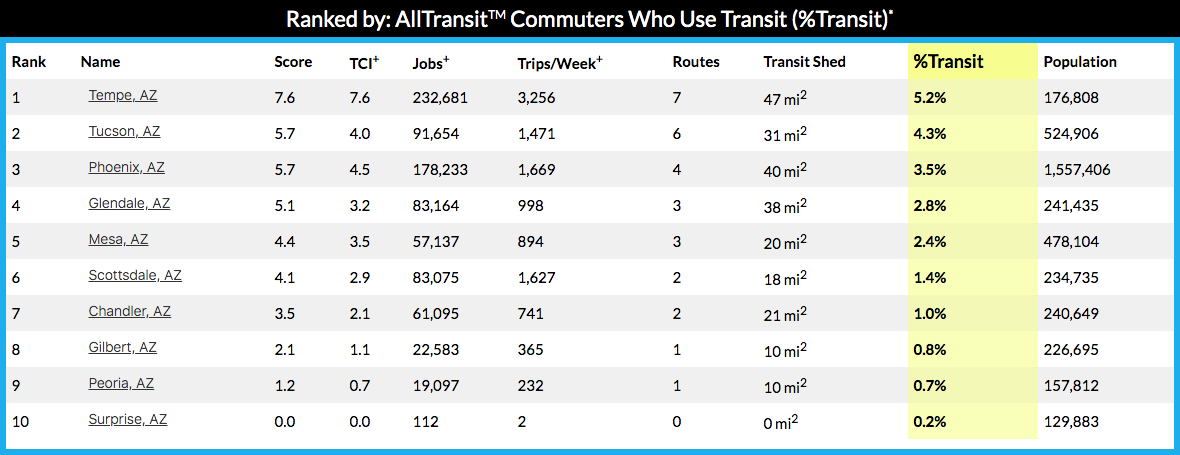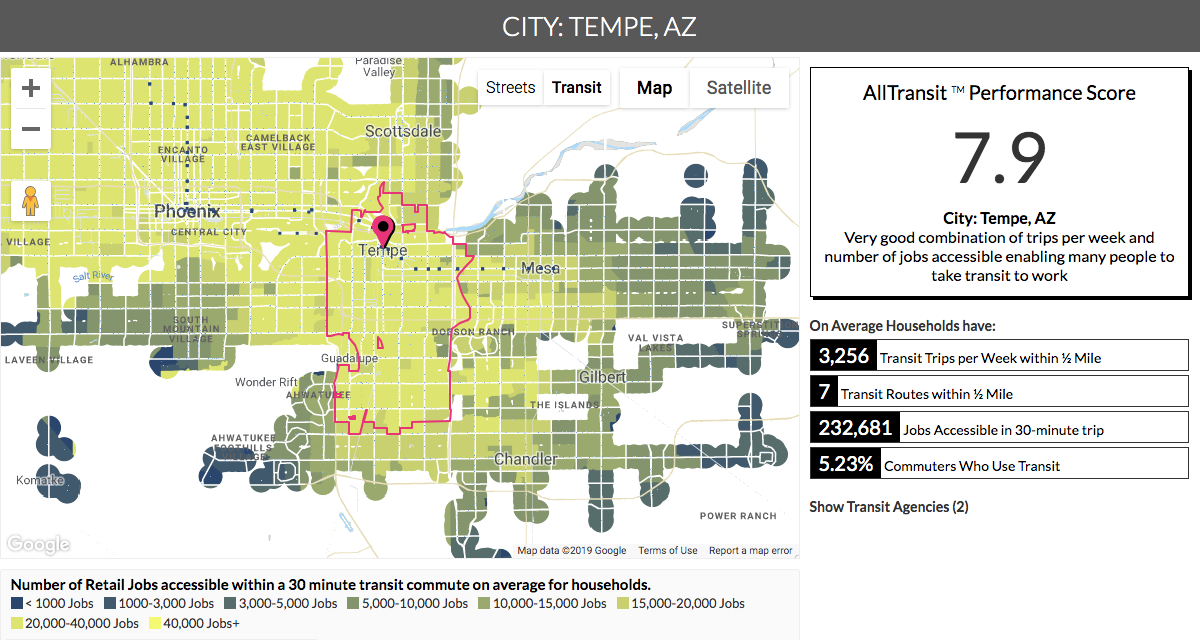AllTransit is an analytical tool and extensive database that helps users identify obstacles to and opportunities for transit-conscious livelihoods. In application, it helps residents assess their level of transit accessibility to an assortment of opportunities in education, employment, and retail. To explore the extensive range of its service, we look at age in Tempe, AZ and the typical senior population that defers to a life without a car.
As a more aging population seeks to live in urban areas nationwide, it is important we examine their current and potential accessibility through transit. Through our AllTransit tool, we have assigned Tempe a score of 7.6 – the highest in the state. Here, residents are able to use Valley Metro’s 26-mile light rail route to Phoenix, Mesa and Tempe, among numerous bus routes.
When compared to other cities in Arizona, we see that the most efficient transit systems are installed in Tempe. On average, residents there have access to 7 different transit routes within a half mile, and as a result, contribute to the highest share of transit commuters in the state (5.2%).

Tempe's AllTransit Performance Score ranks above other cities in Arizona.
Of the 10% of households in Tempe that do not own a vehicle, all live within ½ mile of transit. 46% of these households have access to transit every 15 minutes (or less) between 7am and 10pm. This includes access to leisure, shopping and recreational activities. In Tempe, we use the spatial distribution below to see the many households that live without a vehicle along the light rail line.

Number of households within a half mile of transit with no vehicles available.
Alltransit’s “Transit Access to Jobs” metric measures the number of jobs, by sector, that are reachable within a 30-minute transit ride. Tempe residents are connected to 22,983 retail jobs via transit, which is twice more than the average for Maricopa County, and a third more than Phoenix. Retail jobs are an indicator of the density of retail establishments – the more retail jobs accessible, the more retail opportunities available to a resident.

Number of Retail Jobs accessible within a 30 minute transit commute on average for households.
Well-connected transit systems are essential to retail, recreation, and healthcare accessibility. These features are not only important to individual families that seek a higher quality of life, but also to the planners and policymakers who are able to ensure these objectives are carefully met.